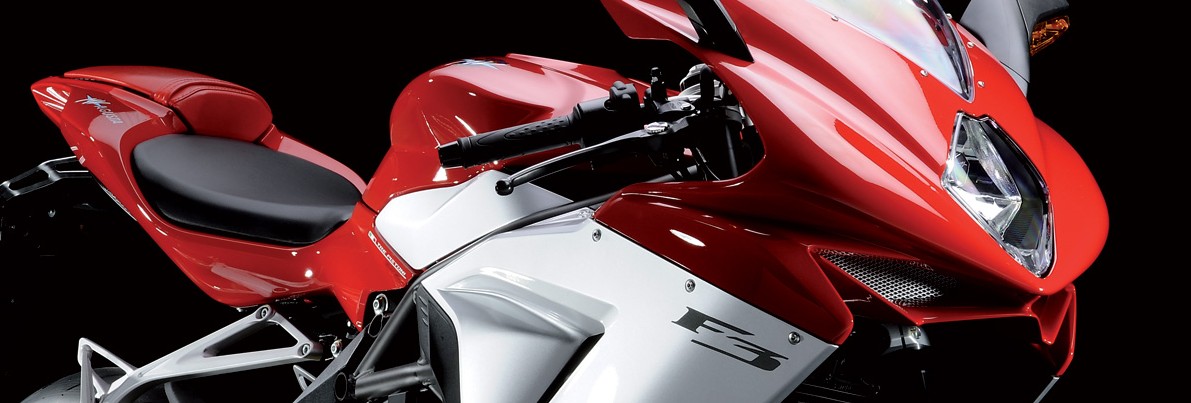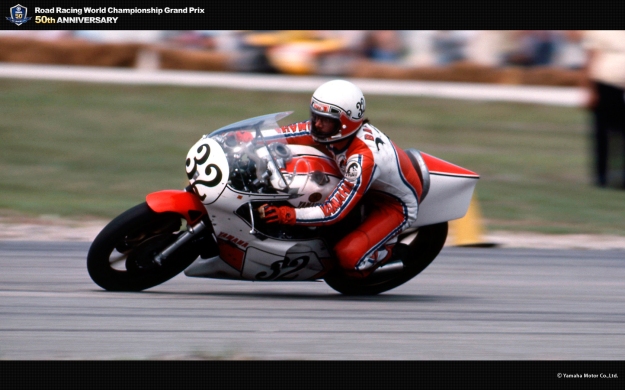
When American Kenny Roberts invaded the European Grands Prix in 1978, the two times AMA Grand National Champion, left an indelible mark on the World Championship. Not only did Roberts become the first American to win a 500cc world title (the first of three), he also brought to Europe an American dirt track style of racing that would change the face of the sport forever. Not only that, but Roberts was also instrumental in improving paddock conditions, safety and appearance money after ruffling the FIM and establishment’s feathers by proposing a breakaway “World Series” to compete with the Grands Prix.
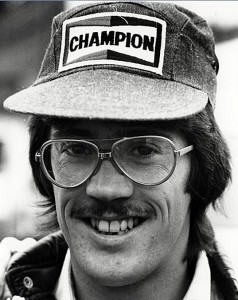
The quiet achiever Steve Baker.
It’s therefore somewhat understandable that when the question of who was the first American to win a 500cc Grand Prix, it’s assumed it was Kenny.
In fact, it was a fellow Californian, Pat Hennen. Hennen started racing in the 500cc World Championship in 1976 for Suzuki GB and won his and America’s first 500cc Grand Prix in Finland that year. He also finished a creditable third in the Championship. Hennen performed the same feat the following year, this time winning British Grand Prix and placing third again in the Championship. In 1978 Hennen won in Spain but suffered a severe race crash at the Isle of Man TT, which ended his career.
So who was the first American to win an FIM road racing World Championship? Ditto, again it’s assumed to be Roberts.
It was, however, a diminutive, unassuming, and quietly spoken character by the name of Steve Baker. Born on the 5th of September 1952 in Bellingham, Washington State, Baker, like so many of the American World Champions that followed, started out a dirt tracker. At age 11 he would spend hours riding the many dirt trails around his hometown and at 16 began to race on short track and the TT dirt tracks of the Pacific Northwest. By the early 1970’s Steve had become one of the top-ranked novices, and junior TT riders in America. Baker was by now racing in events up and down the west coast of the United States and Canada.
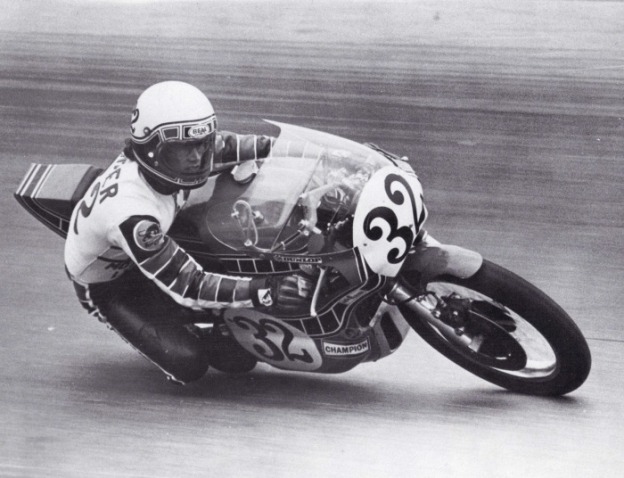
Baker at work on Yamaha Canada TZ750.
Steve then turned his hand to road racing, mainly in Canada, competing in as many as five classes during a typical weekend. It wasn’t long before Baker had a hat-trick of Canadian road racing titles to his name in the 500cc expert class, taking the number one plate in 1974, 1975 and 1976. 1976 was a good year for Baker who also took out the 250cc and unlimited expert class as well.
Baker had begun racing professionally in 1973 with sponsorship from Yamaha Canada’s Trevor Deeley, with Bob Work as his tuner. Baker’s debut in his first AMA national was at the 1973 Daytona 200 in which he finished 28th. It was not until September that year that Baker showed his true potential with a creditable 2nd place to former 250cc World Champion Kel Carruthers at Talladega in Alabama. Unfortunately, it was on the same circuit the following year that Baker crashed and broke his leg, leaving him sidelined for the rest of the year.
Bakers comeback ride was at Daytona in 1975, and it netted him a commendable 2nd place to Gene Romero. But it was in 1976 that Baker’s star really shone. Now one of only five riders to receive a “works” OW31 TZ750 Yamaha, it proved to be an awe-inspiring combination. Baker qualified 2nd to Kenny Roberts at the season-opening Daytona 200, but during the race suffered mechanical problems after holding down third place. Disappointment turned to success at the next two FIM Formula 750 Prize events in Venezuela and at Imola in Italy with Baker winning both of the 200-mile races.
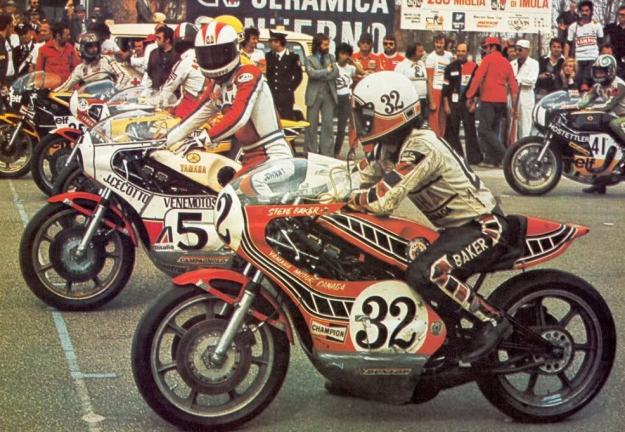
Baker on the grid at Imola alongside future factory teammate Johnny Cecotto.
On the home front, he recorded his first AMA national victory at the Loudon Classic in June and backed it up with a win in the 250cc race. Baker repeated this at Laguna Seca again winning both the national and 250cc event. 1976 was also Baker’s debut in the Trans-Atlantic Match Races, a series that pitted a team of America’s best riders against seasoned English racers on circuits in the UK. Baker won four of the six races finishing second and fourth in the other two and was top points scorer of the series. This was against riders of the calibre of Kenny Roberts, Barry Sheene and former world champion Phil Read. Baker followed this up later that year with a win in the prestigious Race of the Year at Mallory Park beating the likes of 500cc World Champion Barry Sheene and multiple World Champion Giacomo Agostini amongst others.
For 1977 the FIM Formula 750 Prize had been granted full World Championship status with the season starting Daytona 200 as the opening round. Baker by now had been drafted into the official Yamaha factory squad to contest not only the new 750cc World Championship but the 500cc World Championship as well alongside Johnny Ceccotto. Giacomo Agostini was also provided with “works” machinery through the Italian Yamaha importer.
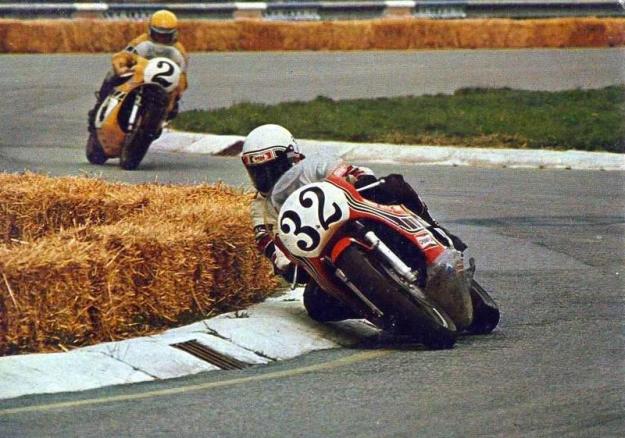
Baker leads Roberts both on the OW31.
Finally, everything seemed to come together for Baker at Daytona, qualifying on pole position and winning the race. Baker also clinched the double by winning the International Lightweight 250cc race. The F750 World Championship consisted of eleven rounds most of which (unlike the Grands Prix) consisted of two heats. Six of the circuits Baker had raced on before and with the mighty OW31 at his disposal he was able to win five of the rounds, coming second in three and third in two. Baker never finished off the podium in the 10 championship rounds he contested. His nearest rival Frenchman Christian Sarron was 76 points behind. America, at last, had its first FIM road racing World Champion.

Diminutive Baker manhandles the OW31 through the infield.
But it was the 500cc World Championship that Yamaha was most eager to capture. The Japanese company had first entered the blue riband 500cc class in 1973 with 1972 250cc World Champion Jarno Saarinen. Unfortunately, Saarinen was killed in the 250cc race at Monza while leading the point’s table in the 500cc class. Yamaha withdrew for the rest of the season but returned in 1974 with the great Giacomo Agostini. Agostini went on to win the title for Yamaha in 1975 giving them and Japan their first 500cc World Championship. But in 1976 rival Japanese manufacturer Suzuki with the talented Barry Sheene had taken the title away. Yamaha was required to save face.
In 1977 the 500cc GP’s were also contested over eleven rounds, but many of the circuits were new to Baker. Steve was reported to have said in a recent interview that he was “overwhelmed by Europe” when contesting the championship. Not only were their new circuits to learn, but there was also the question of racing in the rain, something that did not occur in the United States. On top of that, there was the culture shock of living outside of the states. Then, of course, there were the street circuits, which were part of the Grand Prix calendar. Spa in Belgium, Imatra in Finland, Brno in Czechoslovakia and Opitijia in Yugoslavia all could prove deadly and finding the right place to make up time or take calculated risks could only come from experience. Let’s not forget that 1977 saw the British Grand Prix on the mainland for the first time (at Silverstone) after the top riders of the day vetoed that most deadly of all road courses, the Isle of Man TT. Even the closed circuits at that time could not be considered “safe” by today’s standards, and fatalities regularly took place.
It was with this backdrop that Baker contested the championship, taking on seasoned campaigners like World Champion Sheene and a flotilla of “works” or factory-supported RG500 Suzuki’s, not to mention his own teammate Ceccotto and Agostini on the other factory Yamaha YZR500 0W35’s.
At the end of a tough season, Baker finished in a creditable second place to World Champion Barry Sheene. He had scored second place three times, third place three times, fourth once and fifth once. The second round of the 500cc Championship had been boycotted in Austria at the Salzburgring after an accident in the 350cc race that saw one rider killed and several others seriously injured, including Baker’s teammate Johnny Ceccoto, who broke his arm. At the other two tracks that made up the series in Finland and Czechoslovakia, Baker suffered mechanical problems which blunted his final points tally, 80 to Sheene’s 107.
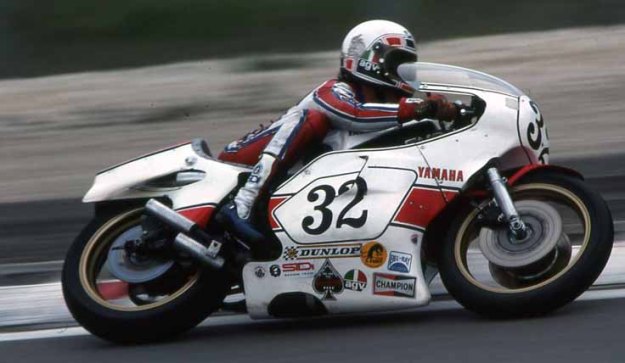
Always fast.
With such a performance in his rookie year, a factory contract for 1978 might have been expected. The only thing that Baker hadn’t achieved was winning a 500cc Grand Prix. Unfortunately Yamaha top brass witnessed a domestic bust-up between Baker and his fiancé Bonnie with his sister and Bob Work at the Dutch TT in Assen. This seemed to seal Steve’s fate, and a contract was not forthcoming.
The Gallina team signed Baker for the following season on a private Suzuki RG500. But against factory machinery, he could only achieve seventh in the championship, his best result a third-place podium in Venezuela. Baker also competed in the F750 World Championship for the Gallina team on a production Yamaha TZ750E although he was “allowed” to ride Yamaha Canada’s factory OW31 in North America. Daytona was no longer part of the F750 World Championship in 1978, although it was still the most significant road race in America. Baker suffered a DNF through mechanical failure while in second place chasing Kenny Roberts. The season turned out to be one of mechanical failures and risky strategy for Baker, desperate to try and compete with the “works” machines. To cap off a disastrous season, at the last round at Mosport in Canada, Baker was involved in another riders fatal practice crash. Baker escaped with a badly broken arm and leg.
Steve finished sixth in the Championship with his best results being two-second places at Imola and Laguna Seca and a third-place at Paul Ricard. The following season, in 1979, Baker was set to race in the MCN/Superbike championship in the UK riding a Yamaha TZ750F for Sid Griffiths. At the second round of the series, at Brands Hatch, Baker crashed entering Paddock Hill bend and sustained similar injuries to his Mosport crash of the previous year.
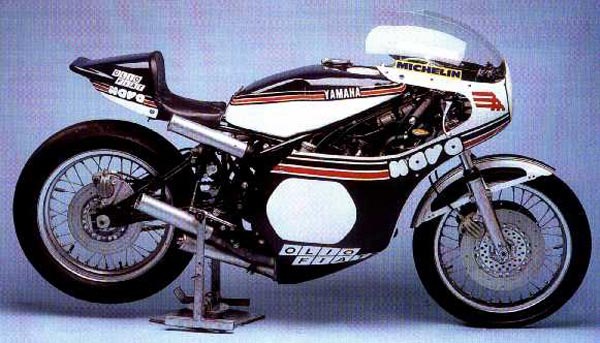
Bakers privateer Gallina TZ750E.
Steve Baker left the sport without having the chance to fulfil his enormous potential and returned home to open a Yamaha dealership in his hometown of Bellingham, which he runs to this day. Often overlooked as America’s first World Champion, Baker holds no grudges, and there is no bitterness, only humble gratitude to have been able to enjoy the experience.
In recent years Baker has ridden for the Yamaha Classic Racing Team at numerous classic events around Europe, jogging peoples memories while attracting new fans, and reminding us all of the very special the talent that is, Steve Baker.
Words Geoff Dawes © 2014. Images courtesy http://www.global.yamaha-motor.com, http://www.aircooledrdclub.com, http://www.classicmotorcycles.net and http://www.ge-board.de
 relished reading the latest news, race reports and interviews in the specialist press. To a degree, it allows a certain amount of insight into the character of our racing heroes, but like anyone who is thrust into the media spotlight, the public image does not fully reveal the person.
relished reading the latest news, race reports and interviews in the specialist press. To a degree, it allows a certain amount of insight into the character of our racing heroes, but like anyone who is thrust into the media spotlight, the public image does not fully reveal the person.